Imagine you’re driving through a desert when suddenly larger-than-life sculptures start popping up out of nowhere. China’s first desert sculpture museum can offer you such an experience.
Scattered in a vast desert in northwest China, 102 pieces of sculptures, created by artisans from home and abroad, have been drawing large crowds to the Suwu Desert Scenic Area, making it a new travel hot spot during the National Day holiday.
Themed “Jewels of the Silk Road,” the 2020 Minqin (China) International Desert Sculpture Symposium began last month in the scenic area in Minqin County, Wuwei City, northwest China’s Gansu Province.
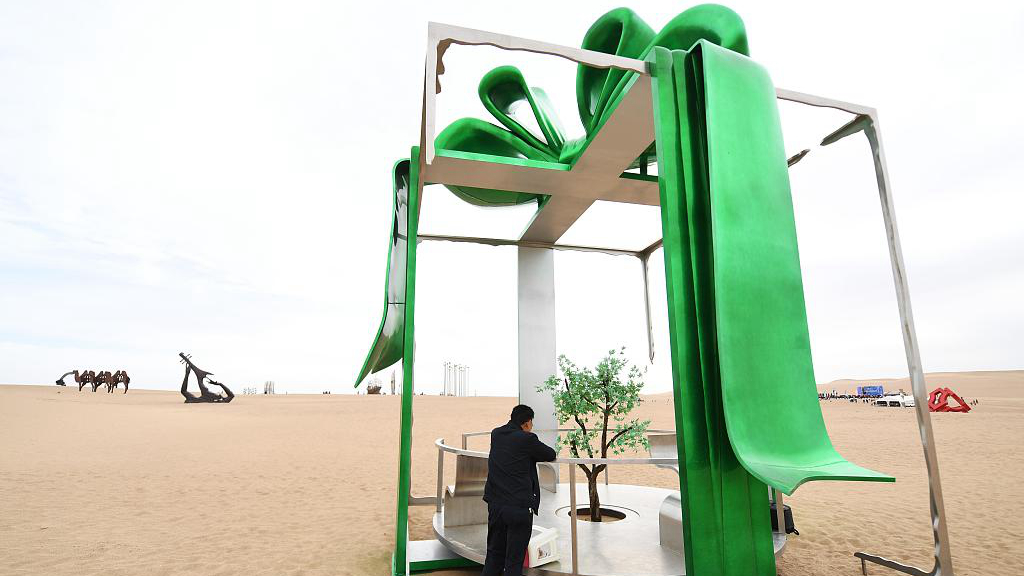
A sculpture is on display during the 2020 Minqin (China) International Desert Sculpture Symposium in Minqin County, Wuwei City, northeast China’s Gansu Province, September 5, 2020. /CFP
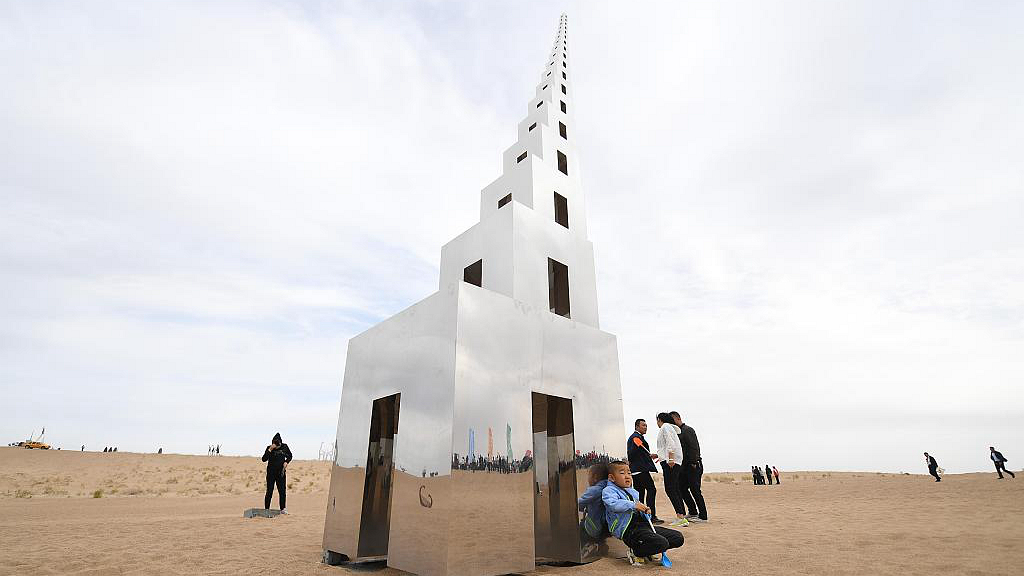
A sculpture is on display during the 2020 Minqin (China) International Desert Sculpture Symposium in Minqin County, Wuwei City, northeast China’s Gansu Province, September 5, 2020. /CFP
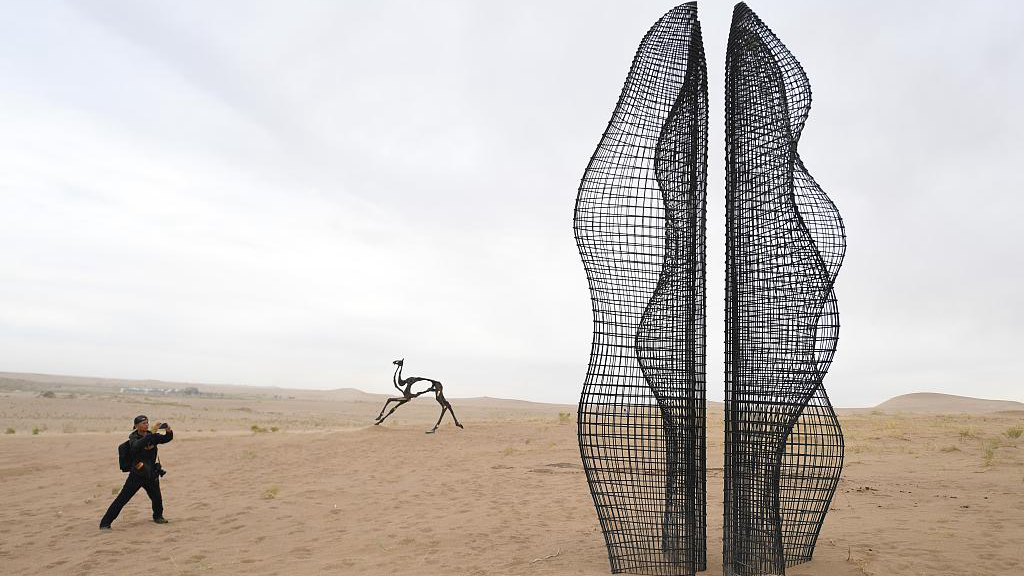
A visitor takes pictures of a sculpture on display during the 2020 Minqin (China) International Desert Sculpture Symposium in Minqin County, Wuwei City, northeast China’s Gansu Province, September 5, 2020. /CFP
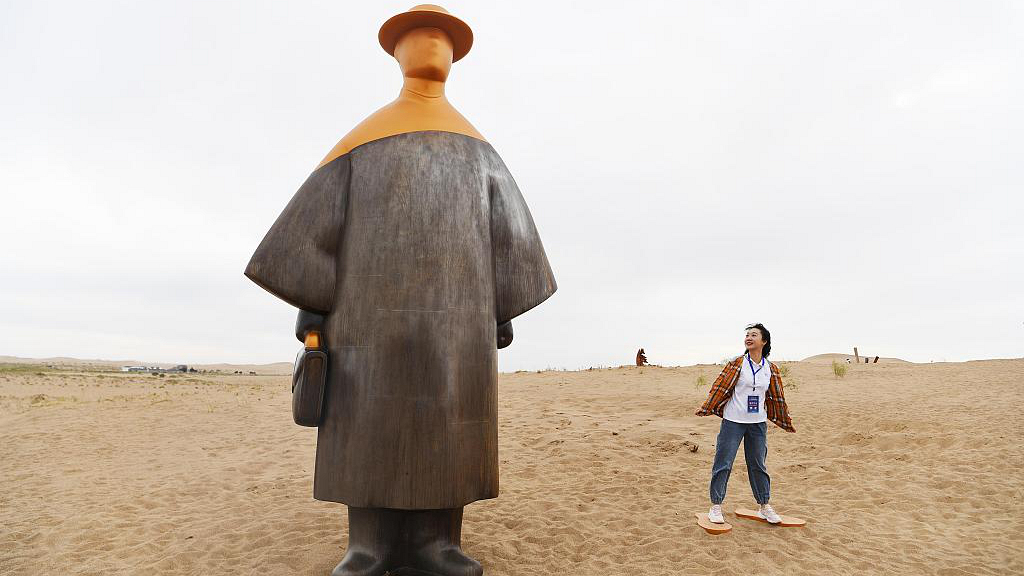
A sculpture is on display during the 2020 Minqin (China) International Desert Sculpture Symposium in Minqin County, Wuwei City, northeast China’s Gansu Province, September 5, 2020. /CFP
According to the organizers, the creative artworks on display were selected from 2,669 entries by 936 artists from 73 countries and regions on the basis of not only the creations but the special environment of the exhibition.
“It is the first time that I have been to this desert sculpture museum. The desert is magnificent and spectacular. I have seen every sculpture here and each sculpture contains rich connotations, which are quite inspiring. It is amazing to be here,” said a tourist Zhang Jiarui.
Another tourist Wang Yanwen, who is from Gansu’s capital city of Lanzhou, said, “We saw these artistic sculptures in various shapes. We also took a lot of photos. When we go back, I will post them on social media platforms so that more people can see them and come to this place for sightseeing.”
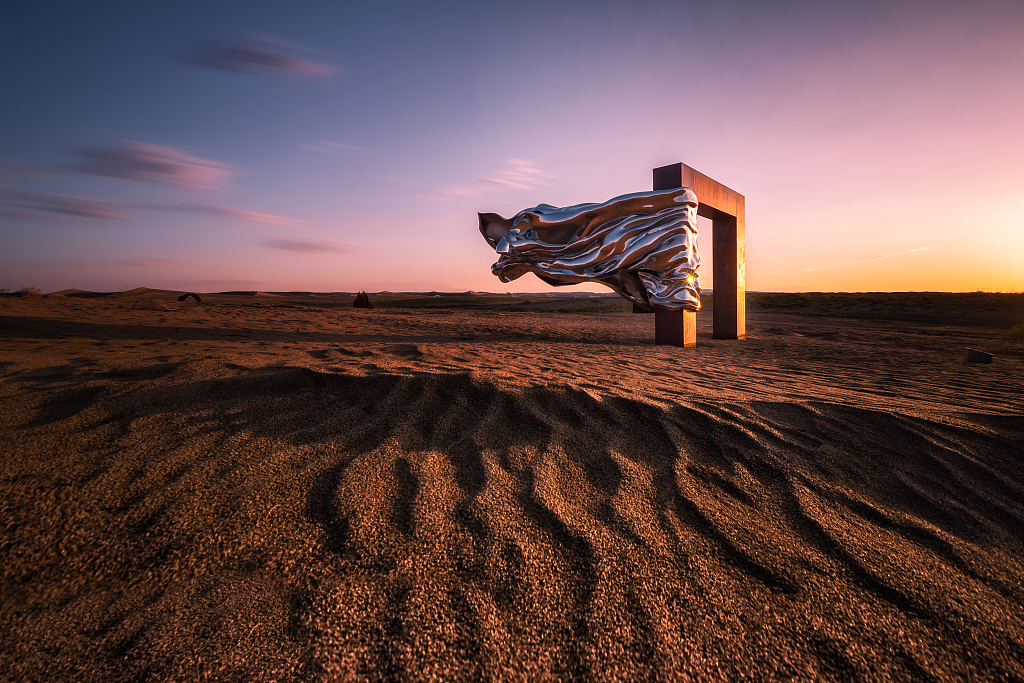
Minqin is a hinterland oasis between the Tengger and Badain Jaran deserts. A sculpture is on display during the 2020 Minqin (China) International Desert Sculpture Symposium in Minqin County, Wuwei City, northeast China’s Gansu Province. /CFP
In addition to the sculpture exhibition, this year’s event, in its third edition, also features a variety of activities, such as artist exchange seminars, sculpture photography exhibitions and desert camping.
From creation to protection
Situated on the ancient Silk Road, Minqin is a hinterland oasis between the Tengger and Badain Jaran deserts. Thanks to the annual event, it has become a popular destination for tourists to see sculptures permanently located in the dramatic setting of the Suwu desert.
Home to the largest desert reservoir in Asia, the 16,000-square-kilometer county, more than 10 times the size of London City, plays a crucial role in local ecological restoration. It shows generations of efforts of carrying forward the tradition of desert prevention and control.
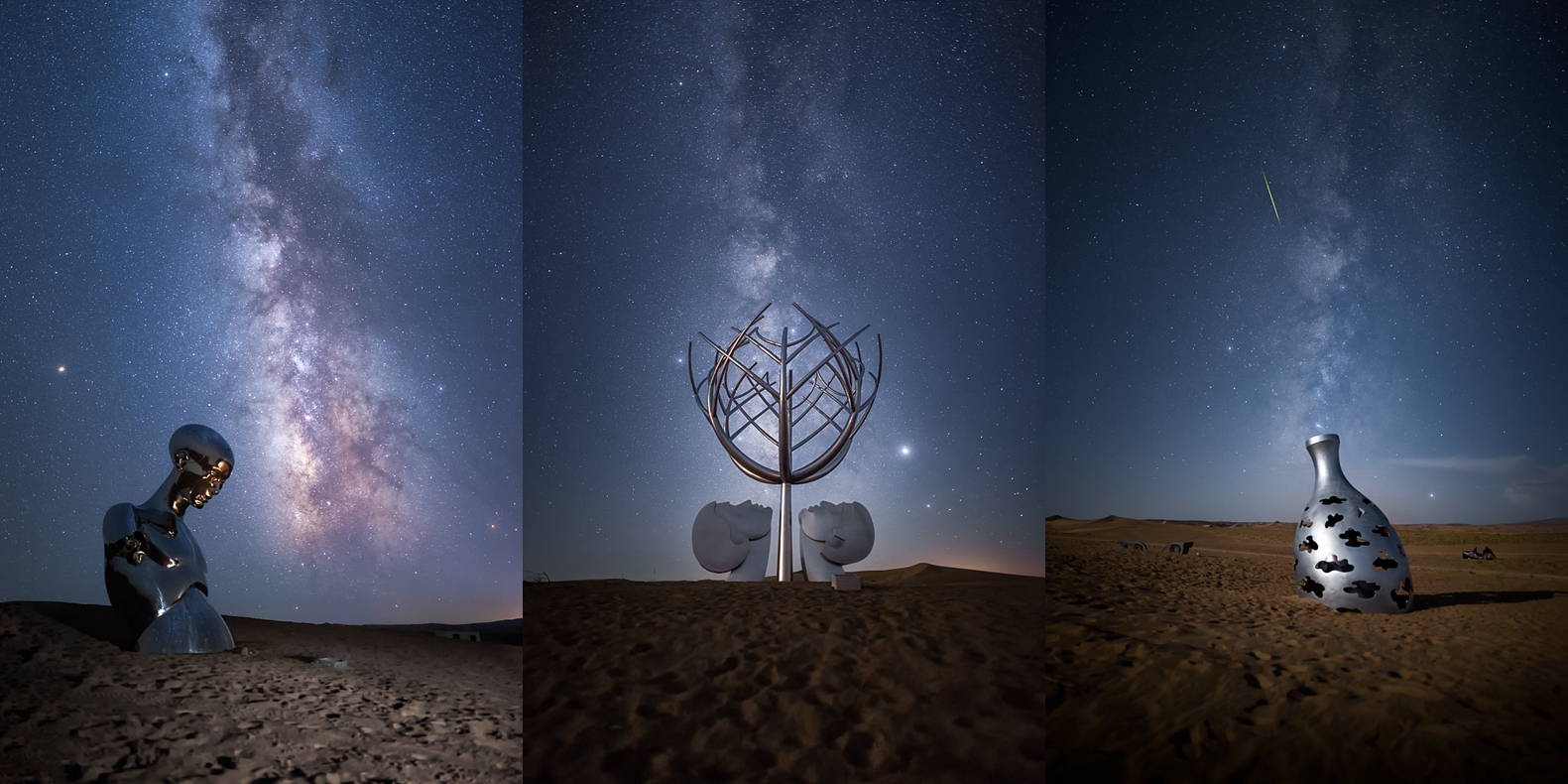
Some sculptures permanently on display in the dramatic setting of the Suwu desert, Minqin County, Wuwei City, northeast China’s Gansu Province.
The county first held several international desert sculpture creation camps and invited domestic and foreign artists to unleash their talents and creativity, and then built China’s first desert sculpture museum to showcase the creations.
Covering an area of about 700,000 square meters, the immense desert museum has a total investment outlay of about 120 million yuan (nearly $17.7 million). It aims to boost the integrated and sustainable development of the local cultural tourism industry.
The natural museum also serves as a platform to promote the concepts about green life and environmental protection, as well as the harmonious coexistence of human and nature.
(Video by Hong Yaobin; Cover image by Li Wenyi)
Post time: Nov-05-2020
